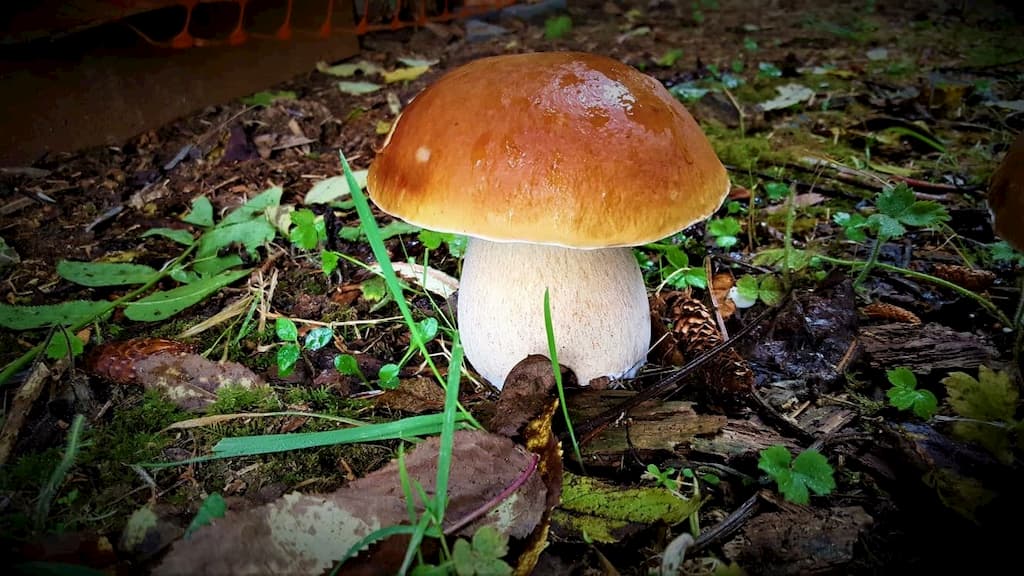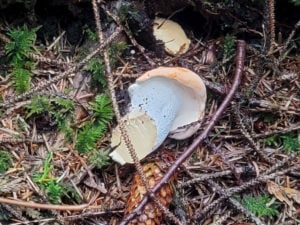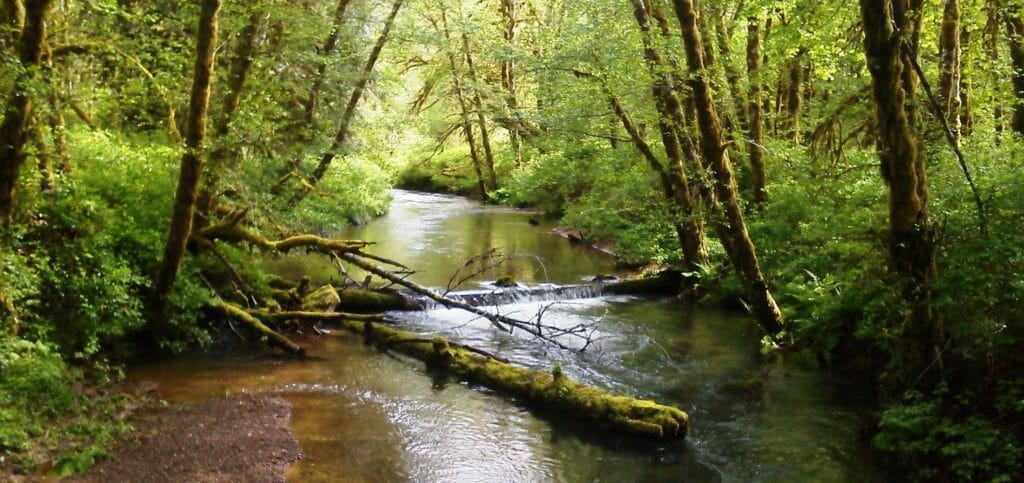Learn how to brain-tan a squirrel you scraped off the pavement or harvested during hunting season. Our goal is to turn the hide of the rodent into a soft and beautiful pelt. As the title implies, we use the squirrel’s brain to brain-tan its hide. So, save those brains!

How to Brain Tan a Squirrel
This request comes from one of our students who is interested in brain tanning a squirrel hide.
He said, "I wanted to share and get some tips (although by the time you reply, I will have already started to get my hands dirty, I'm sure) on skinning a squirrel. I picked a nice roadkill up today. It was getting late and I did not want to work outside so I submerged him in a bucket of cold water. It is tomorrows project." ~Chad
Roadkill handling tips
First, three things you want to be aware of when harvesting any roadkill.
- Check your States fish & game laws about removing dead animals from the highways for personal use; in many states, it is illegal. (Check with them for a permit, it should be free.)
- Wild animals carry all kinds of nasty critters like ticks and fleas that stay in the fur after the animal has expired. Store sturdy plastic bags in your rig with disposable gloves for handling any roadkill you may come upon.
- I recommend disposable gloves through the tanning process. If you have cuts or scratches on your hands, they can become infected without proper protection.

Squirrels, ground squirrels, and mice are brain-tanning projects to start with.
What is tanning?
What is Tanning? Briefly, tanning is the process that takes a raw animal hide or skin and turns it into leather. Deer hides produce a choice Buckskin using this same process.
How to remove the squirrel hide from the carcass
- Remove the hide from the carcass of a squirrel by carefully slicing the animal from the chin, down the belly, to the almost anal end.
- Cut around the genitals and anal area with care not to cut into the internal organs.
- Continue cutting along the underside center of the squirrel’s tail to the tip. Removing the hide from the tailbone is tricky as it is thin and tears easily. Cut slowly along the bone if you intend to save the tail.
How to remove the pelt from the legs
- Starting at the belly, cut along the underside of the forearms and legs of the squirrel.
- Now separate as much fat and tissue as possible from the hide by using your thumbs and forefingers of both hands to peel the pelt from the carcass.
- If you use a knife to do this, be careful not to cut into the hide.
NOTE: If you plan to keep the face and head area intact on the hide, then, like the tail, it is a delicate technique to carefully cut and peel without ripping the skin.
Save the Brains
Okay, you have removed the hide from the carcass. Good job! Save the animal's skull for the brains needed to tan its hide.
To preserve the brain, store the skull in the refrigerator or freezer.
Fleshing the hide
Now we begin the process called Fleshing. Fleshing removes the fat and tissue from the flesh side of the hide.
When fleshing a small animal like a squirrel, you can stretch and tack the hide flesh side up to a board or piece of plywood. Make sure the board is even and flat with no holes in it as rough wood can rip the hide when fleshing.
Flesh scraping tool
Use a butterknife with a finely serrated edge to scrape the flesh and membrane off the hide.
The small serrations catch the fat and membrane as you lightly scrape the membrane.
Gently scrape the fat from the hide. If you use a knife, be careful not to cut or slice it when scraping. Cuts will ruin it while thinning it and cause you to punch through the hide during staking.
Using a fleshing tool
Start by coming into the animal hide at a 90-degree angle. Do not angle your blade like carving wood. That angle will slice and damage the hide. Instead, bring the knife in at a 90-degree angle taking short downstrokes to remove the flesh and tissue. As it dries, it becomes easier to remove the tissue.
Keep at it until you remove all the fat, tissue, and flesh. Once you have done this, the hide is now "rawhide" and can be rolled up and put in a paper sack, in the frig if you want, keeping it safe from dogs who love to chew on hides.
Removing the brains from the skull
Remove the brains from the skull of the squirrel. Put the brains in a plastic container with a tight lid and into the fridge. You may want to leave a description of the contents for the unwary if you have a communal fridge.
Squirrels do not have very much brain tissue. So, what I do to stretch the brains, is add a 1/2 cup of fresh water, rainwater if you have any, and bring the brains with the water to a light boil, turn off the heat, set aside, and let the brains cool. (Boiling is a safety issue.)
Note: remember you are putting the brain mixture onto the flesh side. It will not hurt anything if you get brains on the hair side. But we want to work the cooked brains into the flesh side as much as possible.
How to Brain Tan a Squirrel. The Process
Once the brain liquid has cooled, rub the mixture into the flesh side of the hide. Do this until the flesh side is good and penetrated with the brain mixture. You can also soak a thin cotton cloth in the remaining brain mixture and lay it on the flesh side of the hide.
Then roll up the hide with the cloth and let it sit overnight in a cool dark safe place. Where the dogs, mice, and rats can't get to it. In the morning, roll it out and remove the cloth, wring as much water and moisture as you can from the hide.
Find a nice warm, not hot, place to stretch the hide, and begin the Staking process.
Staking the Hide
The process of stretching is called staking. Staking softens by manipulating the fibers in the hide by pulling and stretching.
Begin by pulling with your hands from all corners of the hide. Then stretch it over the arm or top of a chair. You can drive a wood stake 1-2 inches in diameter into the ground to about waist height.
Use a wood file to round off the point until it is smooth as a broom handle. Use the rounded end to stake your hide. Be gentle with the staking do not punch a hole by using too much down pressure.
Stake and stretch the hide until completely dry. " I cannot stress this enough!"
Your hide should be wonderfully soft now. Run your hands over the hide, if you feel rough spots, you can soften these by using light grit sandpaper, or a smooth small river stone to burnish (polish) the hide. You can always re-brain and re-stake the hide if needed.
Smoking the squirrel hide
I'm sure you are wondering what the heck does that mean? Cold smoke sets the brains into the hide and helps to make the squirrel resistant to water. (Not waterproof.)
Two things leather does not do well with are water and heat. Smoking the hide also helps to preserve the tanned hide.
Too much of both will ruin your hide. Think drying leather boots near a fire. If they get too hot, the leather shrinks and can crack. If it gets wet afterward, you can always dry it by going through the staking process again. So, remember to be careful with heat and fire around your hide.
How to smoke a squirrel hide
Build a tripod out of wood poles. 1 " in diameter. The apex of the tripod is 3 feet high. Then make a small fire pit beneath it.
Bring the edges of the pelt together in a tube shape. The brain-tanned side is on the inside. You can use clothespins, and paper clips, to hold the pelt into shape. Or you can sew the edges together temporarily with a few stitches of thread.
Tie the tanned pelt to a cord and hang it from the tripod directly over your fire pit.
NOTE: make sure the hide smoking is outside and not inside the house or a closed space. If breezy cover the tripod using a folded tarp or dampened bed sheet. Cover the tripod high so it doesn't catch fire but blocks the wind keeping the cold smoke on target.
“The scrotum of a buck, tanned with the hair on, makes a good tobacco-pouch.”
~Horace Kephart
Eating Mouse at First Circle Survival Camp
Watch this video as Mitchell and Tostig, Students of First Circle, share their view of what it's like to eat the fried mouse they trapped at camp.
In Closing
That's all there is to it! Leave me your questions in the comment section below. If you have tips to add about your hide tanning project, we enjoy hearing from you.
Happy Brain Tanning!













